#occupant safety
Text
there will be a global strike on March 2nd for Palestine. be loud, march, protest, whatever you can do. the people have so much more power than you might think. the IDF is planning an attack on Rafah on march 9th.
visit shutitdown4palestine for information about it, and to find protests and gatherings near you. do not stay silent, every word counts. and please research protest safety.
daily click at arab.org
#palestine#gaza#strike for palestine#strike for gaza#free palestine#free gaza#from the river to the sea palestine will be free#end israeli occupation#end israeli apartheid#save rafah#all eyes on rafah#important#🍉#🫒#🇵🇸#i stand with palestine#ceasefire#ceasefire now#current events#protest safety
336 notes
·
View notes
Text
#hospital#hospitals#infection control#infections#tw infection#occupational health and safety#healthcare#health and wellness#mental health#health & fitness#healthylifestyle#health#ausgov#politas#auspol#tasgov#taspol#australia#fuck neoliberals#neoliberal capitalism#anthony albanese#albanese government#long covid#covid conscious#covid 19#covid isn't over#covid#coronavirus#corona virus#germs
76 notes
·
View notes
Text
Holy shit
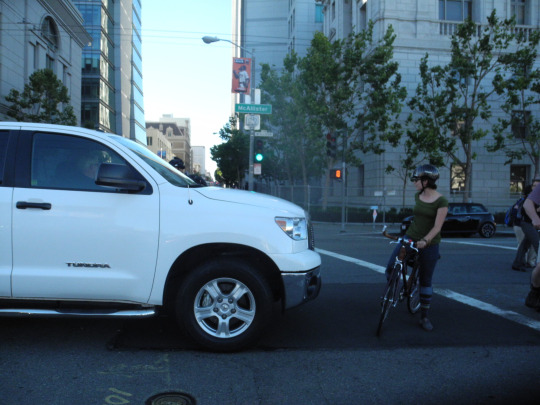
Can I just say

I am so

motherfucking tired
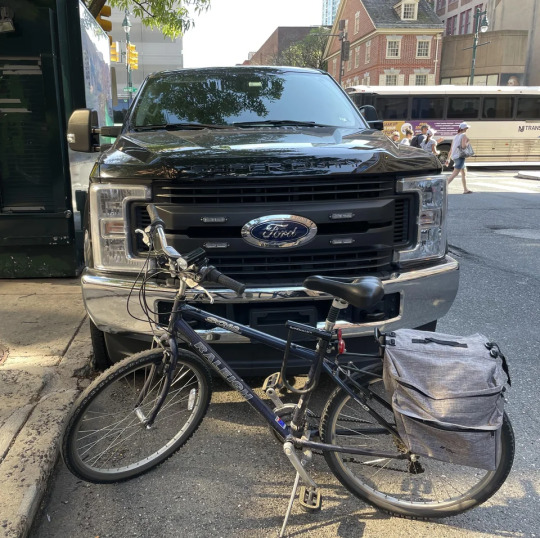
of these exorbitantly huge
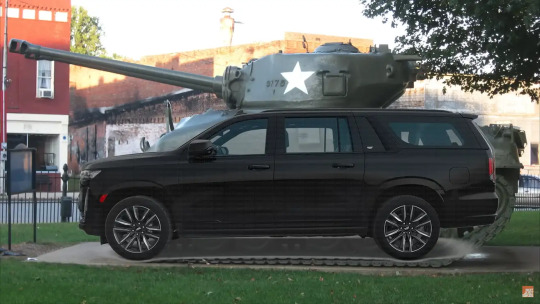
vehicles with front hoods/grilles that are as tall as my head

These need to have the shit taxed out of them and heavily regulated instead of being subsidized as farm equipment and being given out like candy, people are basically like bugs on a windshield if they get hit
#did i mention how all the ~safety features~ that could actually help pedestrians are hardly ever default for these vehicles#and the 'safety ratings' for these vehicles are always about the occupants not how safe they are for using with people outside the vehicle#honourable mention: the front blind spots are HUGE! imagine twenty kids sitting in front of these trucks and only seeing the 21st kid#trucks#pickup trucks#light pickup trucks#gmc denali#gmc sierra#ford f150#dodge ram#chevrolet 3500 hd#chevrolet silverado#ford ranger#toyota tacoma#nissan v8#gmc canyon#and others#fuck cars#car dependence#traffic violence#road violence
216 notes
·
View notes
Text

who doesn't enjoy teaching their pet a new trick?
#torchwood#ianto jones#toshiko sato#owen harper#gwen cooper#myfanwy#pterodactyl#or pteranodon since i've seen her called both#torchwood works hard to find all new exciting ways to break occupational safety standards#i refuse to believe no one's ever been bored enough in the hub to give this a go#they've got just enough brains and know-how to concoct this plan#and few enough brains and common sense to actually attempt it#my art
331 notes
·
View notes
Photo


commission of Roland from Library of Ruina
#library of ruina#roland#roland library of ruina#a draw#an art#super art#commission#still dont go here (who has time to play video games lol) but based on the client description of the scene#i wanted to make his expression say both 'help me' and 'don't you dare help me'#ruina characters really go thru it don't they. I don't think this library meets occupational safety standards
242 notes
·
View notes
Text

Acting all high and mighty when he's not even wearing gloves smh
#cubfan135#docm77#zedaph#cubfan#art?#ft dilfm77 and the cumphantom#dilfm77 and the cumphantom vs the occupational safety and health administration
599 notes
·
View notes
Text
"How much safer has construction really gotten? Let’s take a look.
Construction used to be incredibly dangerous
By the end of the 19th century, what’s sometimes called the second industrial revolution had made US industry incredibly productive. But it had also made working conditions more dangerous...
One source estimates 25,000 total US workplace fatalities in 1908 (Aldrich 1997). Another 1913 estimate gave 23,000 deaths against 38 million workers. Per capita, this is about 61 deaths per 100,000 workers, roughly 17 times the rate of workplace fatalities we have today...
In a world of dangerous work, construction was one of the most dangerous industries of all. By the 1930s and early 1940s the occupational death rate for all US workers had fallen to around 36-37 per 100,000 workers. At the same time [in the 1930s and early 1940s], the death rate in construction was around 150-200 deaths per 100,000 workers, roughly five times as high... By comparison, the death rate of US troops in Afghanistan in 2010 was about 500 per 100,000 troops. By the mid-20th century, the only industry sector more dangerous than construction was mining, which had a death rate roughly 50% higher than construction.
We see something similar if we look at injuries. In 1958 the rate of disabling injuries in construction was 3 times as high as the manufacturing rate, and almost 5 times as high as the overall worker rate.
Increasing safety
Over the course of the 20th century, construction steadily got safer.

Between 1940 and 2023, the occupational death rate in construction declined from 150-200 per 100,000 workers to 13-15 per 100,000 workers, or more than 90%. Source: US Statistical Abstract, FRED
For ironworkers, the death rate went from around 250-300 per 100,000 workers in the late 1940s to 27 per 100,000 today.
Tracking trends in construction injuries is harder, due to data consistency issues. A death is a death, but what sort of injury counts as “severe,” or “disabling,” or is even worth reporting is likely to change over time. [3] But we seem to see a similar trend there. Looking at BLS Occupational Injuries and Illnesses data, between the 1970s and 2020s the injury rate per 100 workers declined from 15 to 2.5.
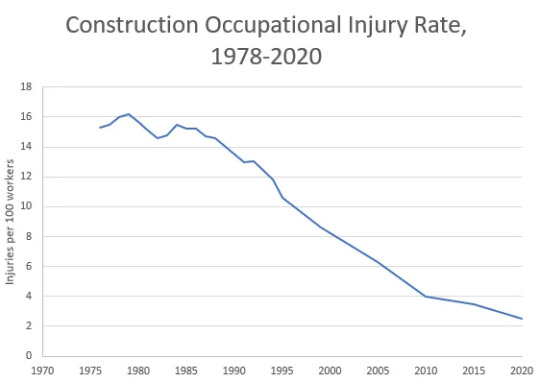
Source of safety improvements
Improvements in US construction safety were due to a multitude of factors, and part of a much broader trend of improving workplace safety that took place over the 20th century.
The most significant early step was the passage of workers compensation laws, which compensated workers in the event of an injury, increasing the costs to employers if workers were injured (Aldrich 1997). Prior to workers comp laws, a worker or his family would have to sue his employer for damages and prove negligence in the event of an injury or death. Wisconsin passed the first state workers comp law in 1911, and by 1921 most states had workers compensation programs.
The subsequent rising costs of worker injuries and deaths caused employers to focus more on workplace safety. According to Mark Aldrich, historian and former OSHA economist, “Companies began to guard machines and power sources while machinery makers developed safer designs. Managers began to look for hidden dangers at work, and to require that workers wear hard hats and safety glasses.” Associations and trade journals for safety engineering, such as the American Society of Safety Professionals, began to appear...
In 1934, the Department of Labor established a Division of Labor Standards, which would later become the Occupational Safety and Health Administration (OSHA), to “promote worker safety and health.” The 1935 National Labor Relations Act (NLRA), which legalized collective bargaining, allowed trade unions to advocate for worker safety.
Following WWII, the scale of government intervention in addressing social problems, including worker safety, dramatically increased.
In addition to OSHA and environmental protection laws, this era also saw the creation of the Consumer Product Safety Commission (CPSC), the National Highway Traffic Safety Administration (NHTSA), and the National Institute for Occupational Safety and Health (NIOSH).
OSHA in particular dramatically changed the landscape of workplace safety, and is sometimes viewed as “the culmination of 60 or more years of effort towards a safe and hazard-free workplace.”"
-via Construction Physics (Substack newsletter by Brian Potter), 3/9/23
#construction#osha#workplace#workplace safety#workers rights#labor rights#occupational health#nlra#collective bargaining#united states#us history#labor unions#industrial revolution#this is why unions and regulations are so fucking important by the way#if you have not studied late 1800s and early 1900s labor history in the US#you really can't grasp how incredibly dangerous things used to be#and how much proof we have that corporations suck#government regulations
89 notes
·
View notes
Text
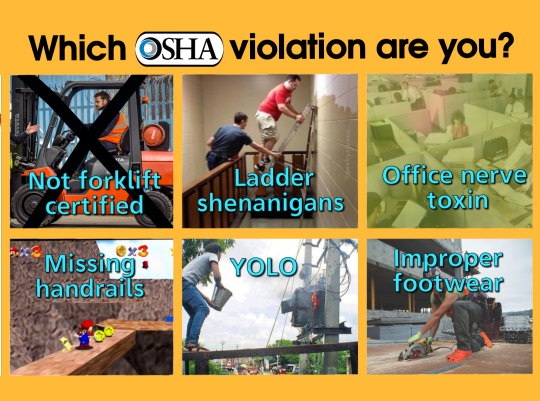
18 notes
·
View notes
Text
i have once more Read a Book !
the book was jim morris' cancer factory: industrial chemicals, corporate deception, & the hidden deaths of american workers. this book! is very good! it is primarily about the bladder cancer outbreak associated with the goodyear plant in niagara falls, new york, & which was caused by a chemical called orthotoluedine. goodyear itself is shielded by new york's workers' comp law from any real liability for these exposures & occupational illnesses; instead, a lot of the information that morris relies on comes from suits against dupont, which manufactured the orthotoluedine that goodyear used, & despite clear internal awareness of its carcinogenicity, did not inform its clients, who then failed to protect their workers. fuck dupont! morris also points out that goodyear manufactured polyvinyl chloride (PVC) at that plant, and, along with other PVC manufacturers, colluded to hide the cancer-causing effects of vinyl chloride, a primary ingredient in PVC & the chemical spilled in east palestine, ohio in 2023. the book also discusses other chemical threats to american workers, including, and this was exciting for me personally, silica; it mentions the hawks nest tunnel disaster (widely forgotten now despite being influential in the 30s, and, by some measures, the deadliest industrial disaster in US history) & spends some time on the outbreak of severe silicosis among southern california countertop fabricators, associated with high-silica 'engineered stone' or 'quartz' countertops. i shrieked about that, the coverage is really good although the treatment of hawks nest was very brief & neglected the racial dynamic at play (the workers exposed to silica at hawks nest were primarily migrant black workers from the deep south).
cancer factory spends a lot of time on the regulatory apparatus in place to respond to chemical threats in the workplace, & thoroughly lays out how inadequate they are. OSHA is responsible for setting exposure standards for workplace chemicals, but they have standards for only a tiny fraction—less than one percent!—of chemicals used in american industry, and issue standards extremely slowly. the two major issues it faces, outside of its pathetically tiny budget, are 1) the standard for demonstrating harm for workers is higher than it is for the general public, a problem substantially worsened during the reagan administration but not created by it, and 2) OSHA is obliged to regulate each individual chemical separately, rather than by functional groups, which, if you know anything at all about organic chemistry, is nonsensical on its face. morris spends a good amount of time on the tenure of eula bingham as the head of OSHA during the carter administration; she was the first woman to head the organization & made a lot of reasonable reforms (a cotton dust standard for textile workers!), but could not get a general chemical standard, allowing OSHA to regulate chemicals in blocks instead of individually, through, & then of course much of her good work was undone by reagan appointees.
the part of the book that made me most uncomfortable was morris' attempt to include birth defects in his analysis. i don't especially love the term 'birth defect'—it feels cruel & seems to me to openly devalue disabled people's lives, no?—but i did appreciate attention to women's experiences in the workplace, and i think workplace chemical exposure is an underdiscussed part of reproductive justice. cancer factory mentions women lead workers who were forced to undergo tubal ligations to retain their employment, supposedly because lead is a teratogen. morris points at workers in silicon valley's electronics industry; workers, most of them women, who made those early transistors were exposed to horrifying amounts of lead, benzene, and dangerous solvents, often with disabling effects for their children.
morris points out again & again that we only know that there was an outbreak of bladder cancer & that it should be associated with o-toluedine because the goodyear plant workers were organized with the oil, chemical, & atomic workers (OCAW; now part of united steelworkers), and the union pursued NIOSH investigation and advocated for improved safety and monitoring for employees, present & former. even so, 78 workers got bladder cancer, 3 died of angiosarcoma, and goodyear workers' families experienced bladder cancer and miscarriage as a result of secondary exposure. i kept thinking about unorganized workers in the deep south, cancer alley in louisiana, miners & refinery workers; we don't have meaningful safety enforcement or monitoring for many of these workers. we simply do not know how many of them have been sickened & killed by their employers. there is no political will among people with power to count & prevent these deaths. labor protections for workers are better under the biden administration than the trump administration, but biden's last proposed budget leaves OSHA with a functional budget cut after inflation, and there is no federal heat safety standard for indoor workers. the best we get is marginal improvement, & workers die. i know you know! but it's too big to hold all the same.
anyway it's a good book, it's wide-ranging & interested in a lot of experiences of work in america, & morris presents an intimate (sometimes painfully so!) portrait of workers who were harmed by goodyear & dupont. would recommend
#if anyone knows about scholarship that addresses workplace chemical exposure#& children born with disabilities through a disability justice lens please recommend it to me!#booksbooksbooks#have reached the point in my Being Weird About Occupational Safety era where i cheered when familiar names came up#yay irving j. selikoff champion of workers exposed to asbestos! yay labor historians alan derickson & gerald markowitz!#morris points out the tension between workers - who want engineering controls of hazards (eg enclosed reactors)#& employers who want workers to wear cumbersome PPE#the PPE approach is cheaper & makes it even easier to lean on the old 'the worker was careless' canard when occupational disease occurs#i just cannot stop thinking about it in relation to covid. my florida library system declined to enforce masks for political reasons#& reassured us that PPE is much less important than safety improvements at the operational & engineering level#but they didn't do those things either! we opened no windows; upgraded no HVACs; we put plexi on the service desks & stickers on the floors#& just as we have seen covid dangers downplayed or misrepresented workers still do not receive useful information about chemical hazard#a bunch of those MSDS handouts leave out carcinogen status & workers had to fight like hell to even be told what they're handling#a bunch of them still do not know—consider agricultural workers & pesticide exposures. to choose an obvious & egregious example.
8 notes
·
View notes
Text
The most frustrating part of engaging in any of this discourse with pro-Israel people is that they claim there's just something ineffable about "seeing and understanding" how supporting Palestinian liberation is directly calling for the eradication of Jewish people (as if that type of rhetoric isn't exactly how actual antisemitism often manifests in online spaces but that's a topic for another day)
They get through people debunking the "the land belongs to the people of Israel anyway" argument and the "LGBTQ Palestinians are safe in Israel" argument and the "Genocide isn't what's happening here so you should educate yourself" argument and when all of those points are meticulously disproven over and over they still stand with "Well, myself and your Jewish friends see the hate you have in your heart for us" and it truly doesn't matter what you say at that point because even if you yourself are Jewish they will claim that refusing to support the state, government and military of Israel is inherently hateful and bigoted, as if a religious ethnostate is some inherent human right that is being taken away from them. I know many of them are blinded by the relentless propaganda that's been around their whole lives and how hard it is to break free from a belief system that is so tied to your core identity as a human being but it is so frustrating watching people being led straight to the point over and over again and just turning around and refusing to see it.
It's also so frustrating to see people using the momentum of this movement to casually tack on actual antisemitism to these discussions, as if having Jewish people in positions of power is why the US bends over backwards to excuse the actions of Israel and not, yknow, the fact that our government directly benefits from having a military stronghold in the middle east. I've talked to some well-meaning pro-Palestine friends irl who casually use antisemetic talking points because they've ALSO bought into the narrative that Israeli = Jewish and so they blame the actions of Israel and the IDF on Jewish people's "religious values" and ignore the fact that this conflict really has almost nothing to do with religion itself and everything to do with capitalism, imperialism and maintaining the US's status as a so-called "global power".
#dont get me wrong there are lots of people on the pro palestine side who are very much aware of and vigilant against antisemitic rhetoric#but i genuinely worry about some of my non-jewish leftist friends and allies falling down some super shady pipelines because of all of this#i spend a lot of my time on my public facing social media sharing articles and graphics and whatnot about antisemitism#and how careful we need to be when calling out these atrocities and our government's complicity in them#but when one side is genuinely claiming with no evidence or argument that being against colonial occupation is just antisemitism#it makes it so hard to call out actual antisemitism within these spaces bc it delegitimizes antisemitism as a concern#i just want to scream#like. im not even jewish and i vividly remember when we had a special lesson in girl scouts about how wonderful Israel is#and they had us make little mini versions of the israel flag and they told us that israel stood for the safety of the jewish people#and i came home and i told my mom about how cool israel was#and she promptly pulled me out of girl scouts#which at the time felt unfair because she didnt explain why#but also how do you explain the horrors of colonialism and imperialism to your newly zionist 10 year old#anyway the point is that if i as a non-jewish girl scout was exposed to that kind of propaganda#i can only imagine how inescapable it must be for many american jews in the US#and i truly empathize with the amount of unlearning that needs to be done#and how hard it must be to let go of some of these ideas#but that doesnt make it any less frustrating to watch these dynamics play out on such a massive scale#and i hold so much respect for people in white jewish communities re-educating themselves and standing on the right side of history#as well as for all of the people of color and especially American Palestinians standing up and using their voices as much as they do#personal
19 notes
·
View notes
Text
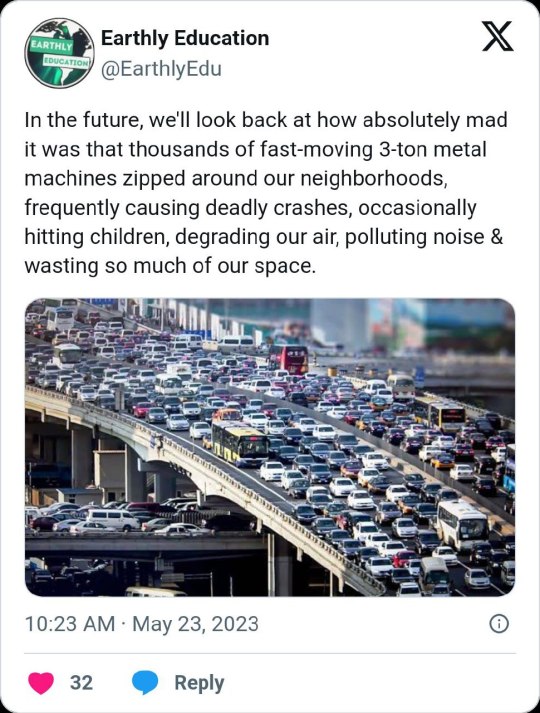
#future#history#electric vehicles#unusual vehicles#vehicle transport#autonomous vehicles#commercial vehicles#vehicles#ausgov#politas#auspol#tasgov#taspol#australia#fuck neoliberals#neoliberal capitalism#anthony albanese#albanese government#roads#road#space#earth#ecology#pollution#pollutants#polluted water#polluted air#safety#health#occupational health and safety
17 notes
·
View notes
Text
So, Canada has decided to stop sending arms to Israel after an NDP motion. The Liberals made major amendments to it so as to firmly condemn Hamas as well. It's kind of a mixed bag. Honestly, it's naive of me but I didn't expect there would still be so much outrage, even if the motion did call for an acknowledgement of Palestine as a state. All the Conservatives voted against it - to be fair, some of them wanted to wait for the motion to be passed because the amendments were super last minute and the Bloc Quebecois were annoyed that because of this there wasn't a French translation.
I guess it's a step in the right direction. I think it's still weak but you can read more on it here.
Source 1, Source 2, Source 3
#I think the biggest thing that confuses me is that there are still comments about Israel being the only safe place for Jewish people#I don't doubt that - a large (I think unfortunately a majority) percent of the hate crimes this year#have been against Jewish people in my country#But uh... maybe the solution here is to work on making Canada (and the world in general) safer for Jewish people?#I know you can't change people's individual attitudes but really#i think saying 'ah yes jewish people will be safe in this place far away from us#where we don't have to deal with this issue in our own country. not anywhere else though' is... weird#also I think if your argument is genuinely that one group's safety has to come at the expense of an entire other group of people#you need to start thinking outside of such a limited narrow scope#storyrambles#<-i'll probably delete my tags after i'm just... sigh...#i know i'm naive to a degree but i really think these opinions are not... especially radical#also i think canada is reticent to show too much support because that might get conversations going around our occupation#of indigenous land and the landback movements#but that's my own thoughts and a separate (though related) matter
8 notes
·
View notes
Text
i have the autism that makes me want to convince people that boring things are actually interesting and good
7 notes
·
View notes
Text
The Federal Advisory Committee for Occupational Safety and Health (OSHA) is seeking public comment on reducing injuries and illnesses in the federal workforce and establishing while maintaining effective occupational safety and health programs. It’s important to submit a personalized comment, which could include counting COVID infections as an illness in the workplace, maintaining N95 masks in healthcare settings in care of COVID patients, ensuring access to high quality respirators in the workplace, improving ventilation, and implementing air filtration in all indoor settings. Feel free to use the points or borrow the language in our sample letter below.
Docket No. OSHA-2023-0012
COVID-19 infections continue to injure, harm, and cause mortality among Americans. Based on both case counts and estimates, millions of Americans also are suffering from Long COVID. It is important that Americans, those in the federal workforce and patients cared for in health care settings are also protected from COVID-19 infections. SARS-CoV-2 is spread via inhalation of aerosol particles with a higher risk at indoor settings compared to outdoor settings. Layers of protection including high quality respirators such as N95s, ventilation, and air filtration have been demonstrated to protect individuals from a COVID19-infection.
COVID-19 infections must be counted as an illness in any workplace setting. Designating COVID-19 as an illness will allow federal workers sick with COVID-19 to have enough time to properly rest and recover from an infection, Furthermore, it will protect coworkers and clients from a COVID-19 infection, which will ultimately prevent outbreaks.
OSHA plays an important role in ensuring healthcare workers are protected from infections when caring for COVID-19 patients, and patients are protected from workers infected with COVID-19. Policies must remain in place to ensure healthcare workers have access to high quality N95 respirators when caring for COVID-19 patients and that COVID-19 patients must be quarantined in a negative pressure room. If healthcare workers stop wearing N95 respirators while caring for COVID-19 patients, many more will develop COVID-19. Because over 50% of COVID-19 transmission occurs before people develop symptoms, they may pass it to their coworkers or patients in a maskless healthcare setting. Policies must also be established that allow workers to use a high quality respirator in their workplace setting at all times.
I ask OSHA to fulfill its mission, which is “to protect the safety and health of America’s workers.” COVID-19 remains a serious safety and health issue for America’s workers. I ask that you ensure agencies such as CDC provide the best recommendations that employ a multi-layer approach to protect federal workers and their clients from COVID-19 infections.
Submitted comments to Docket No. OSHA-2023-0012 must be received by OSHA no later than September 29, 2023 11:59 p.m., EST
#op#covid#osha#uspol#covid-19#workplace safety#health and safety#occupational health and safety#labor#covid19#covid 19#coronavirus#pandemic
5 notes
·
View notes
Text
Tunneling: Methods and Applications
In the vast realm of civil engineering and infrastructure development, tunneling stands as a pivotal and fascinating aspect. It plays a crucial role in connecting people, places, and resources, allowing for efficient transportation, access to resources, and even scientific exploration. This article delves into the intriguing world of tunneling, exploring various methods, their wide-ranging…

View On WordPress
#Blasting#Construction Safety#EIA#environmental impact#Environmental Impact Assessment#Fault Fractures#Geology#Groundwater#occupational safety#RMR#Rock#Rock Mass Rating#safety#Seismic Activity#Soil#Support Systems#TBM#Tunnel Boring Machine#Tunneling#Tunneling Methods
4 notes
·
View notes
Text

"THREE MEN BURIED UNDER TONS OF BRICK," Toronto Star. June 30, 1913. Page 1.
---
Caught Without Warning. When Wooden Platform Bearing Brick Collapsed.
----
ARE SERIOUSLY HURT
---
Injured.
Andre Leschinisky, 25 Turner Ave- nue.
John Orofsky, 127 Niagara street.
Martin Gorgoni, 127 Niagara street.
Scene of Accident.
Esplanade, west of Tecumseh street.
Cause.
Wooden platform supporting 4 tons of brick collapsed burying unfortunate men beneath.
---
Three laborers, John Orofsky, 34 years of age, Andro Leschinisky, 23 years of age, and Martin Gorgoni, were seriously injured this afternoon when four tons of brick were displaced by the collapse of the wooden platform on which it was standing, and, before the unfortunate laborers realized it, buried them beneath the pile. The brick had been unloaded from a freight car preparatory to being used in the erection of the new addition to the Harris Abbatoir company at the foot of Tecumseh street.
The brick had been piled on the platform and the three laborers, Poles, were engaged in wheeling it in barrow-loads to the bank. About one ton had been moved and piled, when the platform holding the remainder collapsed.
Caught Without Warning.
The three men had returned for another barrow-load, and where standing on the platform about six feet from each other.
Caught by surprise, they didn't have a chance to get away from the brick before it collapsed, burying them beneath the pile.
Other laborers in the vicinity, alarmed by the cries of their cmpanions, rushed to the scene and frenziedly threw the brick in all directions in a desperate effort to get the men out before they w were suffocated. Fortunately the brick spread as it fell and it was a comparatively easy matter to rescue their companions.
A hurry call was sent in for the civic ambulance, and the three men were rushed to the Western Hospital. Leschinisky was badly bruised about the back and lower limbs, and it is believed may have sustained internal injuries. Orofsky sustained a badly cut and bruised head and injuries to the back, while the third of the trio escaped with slight injuries, sustaining some cuts and bruises about the body.
#toronto#construction workers#workplace accident#occupational health and safety#seriously injured#abattoir#capitalism in canada#immigrant workers#russian immigration to canada#italian immigration to canada
1 note
·
View note